
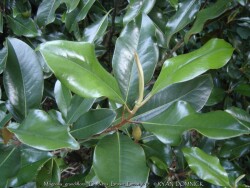
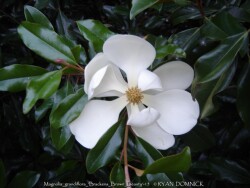
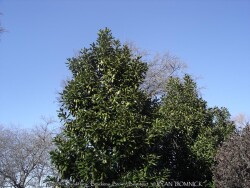
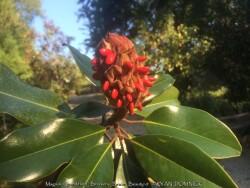
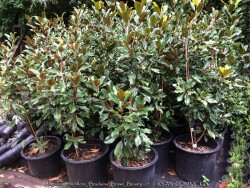
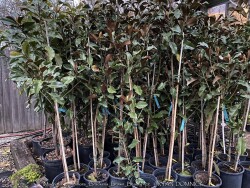
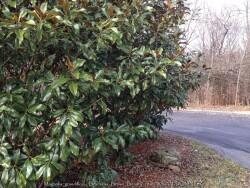

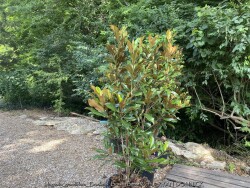
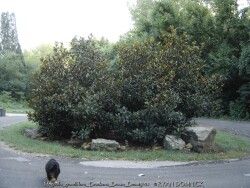
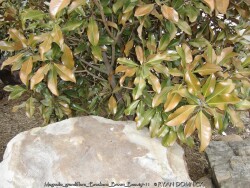

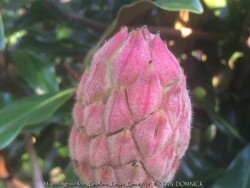
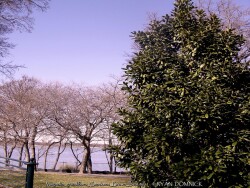
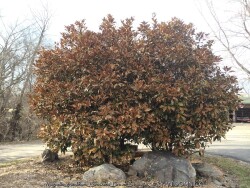
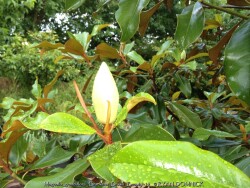

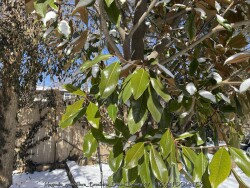
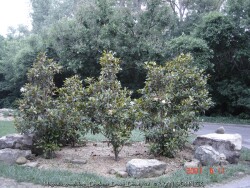
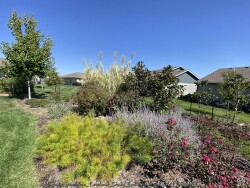
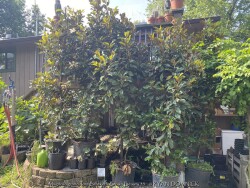
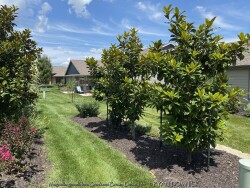
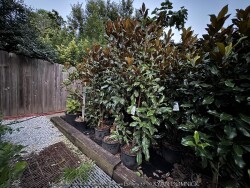
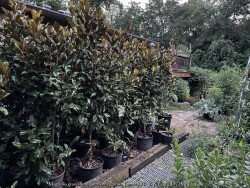

Plant Min Zone: 5b
Plant Max Zone: 10a
Sunlight: All Day Full Sun, Full Sun, Part Sun
Water / Rainfall: Average, High
Soil Quality: Average, Rich
Bloom Season: Early Summer
Flower Color: White, Cream
Berry / Fruit Color: Brown-Beige, Red
Spring Foliage Color: Dark Green, Bronze
Summer Foliage Color: Dark Green, Bronze
Fall Foliage Color: Dark Green, Bronze
Evergreen Foliage: Yes
Winter Interest: Yes
Scented Flowers: Yes
Drought Tolerance: Medium
Wet-Feet Tolerance: Medium
Humidity Tolerance: Medium, High
Wind Tolerance: Medium
Poor Soil Tolerance: No Extreme Soils
Height: 15' - 25'
Width: 10' - 15'
Growth Rate: Medium
Service Life: Tree: Service life varies
Maintenance Need: Low
Spreading Potential: N.A.
Yearly Trimming Tips: Selectively Prune into Small Tree Shape over Period of Many Years.
Plant Grouping Size: Specimen Planting of 1-3, Small Grouping of 3-5, Medium Grouping of 5-10
Best Side of House: South Exposure, West Exposure, East Exposure
Extreme Planting Locations: None
Ornamental Features: Multiple Seasons of Interest, Rot Resistant / Strong Wood Tree, Long Blooming Season, Long Lasting Fall Color, Bright Winter Color, Large Tropical Foliage / Flowers, Exceptional / Colorful Foliage
Special Landscape Uses: Noise / Wind Screening, Hedge Row
Possible Pest Problems: Occasional Problems
Plant Limitations: Needs Regular Irrigation, Needs Thick Winter Mulch, May get Occasional Winter-kill, Susceptible to Juglone / Black Walnut
Shippable in 2026: YES
Magnolia grandiflora 'Bracken's Brown Beauty' is one of the most cold hardy of the Southern Magnolias. Magnolias in general are a family of plants that have been around for millions of years and are among the most primitive of all flowers. In fact, most magnolia flowers evolved before bees and are thus pollinated by beetles. Magnolias generally have no serious pests or diseases. Any of the dwarf Southern Magnolia cultivars serve as a beautiful four seasons small tree or large shrub. Evergreen foliage is a shiny dark green with a brown-orange back that first emerges lighter green. If temperature stay above -10°F, foliage generally stays intact. If colder than that, it will shed its leaves like a deciduous tree when new growth occurs in April. Large tropical-looking white scented flowers bloom in late May and early June. Green cones, yes cones, follow in late summer with the cones opening up to yield beautiful red seeds. Seeds are viable but will not survive the winter here. Bracken's Brown Beauty Magnolias appreciate rich well-drained soil but will tolerate less than ideal clay soils. Sandy or rocky soils are tolerated if watering is sufficient. Magnolias can tolerate short periods of poor drainage but not consistent bog like conditions. Full sun is best but WELL-CARED for Magnolias can tolerate mostly shade in rich soils. This means do not use Magnolias under walnut trees, in dry shade, or exposed to north winds on the north side of a house. Being one of the few broadleaf evergreens hardy in zone 6, Bracken's Brown Beauty has many landscape uses. Several trees planted in a row or group will make an awesome wind and visual screen without the pest problems of coniferous evergreens. If ice or snow damage occurs, Magnolias have the ability to grow back reasonably quickly as opposed to most coniferous evergreens. In fact, Magnolias will come back from the ground is completely cut down and new growth from water sprouts will be rapid. Magnolias also make a great specimen tree or background for flowers and shrubs. Magnolias can be planted near a house without worrying about damaging root systems; they are very easily pruneable if they start getting too big. This highly-rated small landscape tree is perfect somewhere on your property!